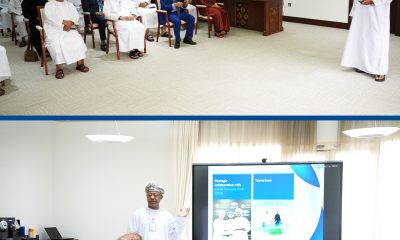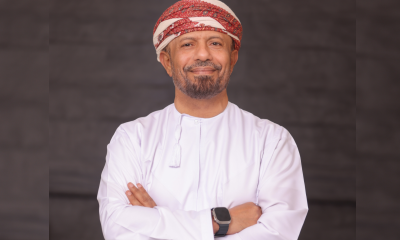Economy
HM The Sultan Ratifies Oman’s State General Budget For 2023. Here’s Everything You Need To Know…

His Majesty Sultan Haitham Bin Tarik has ratified the 2023 General State Budget through a Royal Decree issued today [January 1, 2023].
The approved budget for 2023 includes an allocation of RO900mn for development projects, which will be distributed among various sectors as follows: 6.7 per cent for commodity production, 10.8 per cent for the service production sector, 29.3 per cent for social segments, 42.1 per cent for infrastructure, and 11.1 per cent for other sectors.
In addition to this, spending on contributions and other expenditures in the 2023 budget is estimated to be approximately RO1.830bn or approximately 16 per cent of total public spending.
Two new items have also been introduced, including projects with a developmental impact totalling RO200mn and measures to support the social protection system totalling RO384mn.
Overall, the total endorsed spending in the state’s general budget for 2023 for social and basic sectors amounts to approximately RO4.3bn, or 38 per cent of total public spending, and will be distributed among the following sectors: 44 per cent for education, 22 per cent for social security and welfare, 12 per cent for housing, and 22 per cent for health.
This comes after the 2022 budget achieved a surplus of RO1.146 billion. The 2023 budget projects revenues of RO10.05bn, a decrease of 5 per cent compared to 2022, and expenditures of RO11.35bn, a decrease of 6.4 per cent compared to the previous year.
The finance ministry credits the surplus in the 2022 budget to higher oil prices, which boosted revenues to RO14.234bn. The original budget forecast for 2022 was based on an oil price of US$50 per barrel, but the government now estimates the average price for the year to be US$94.
In order to finance the estimated deficit for 2023, it has been planned to utilise both internal and external borrowing sources, as well as make withdrawals from reserves, totalling approximately RO900mn and RO400mn, respectively.
However, if there are increases in public revenues or additional financial sources of income, such as an increase in the average price of oil, the government may decide to forgo borrowing or withdraw from reserves and instead consider borrowing in order to refinance existing government loans with lower-cost options.
In terms of investment spending, the Oman Investment Authority (OIA) has allocated an estimated RO1.9bn towards such efforts, while Energy Development Oman (EDO) has designated approximately RO1.5bn towards investment projects in the oil and gas production sector.
-

 Alamaliktistaad Magazines2 months ago
Alamaliktistaad Magazines2 months agoAlam Al Iktisaad – September 2025 Edition
-

 News2 months ago
News2 months agoKitchenomiKs Secures Investment of US$3.2M Led by Jasoor Ventures
-

 Banking & Finance2 months ago
Banking & Finance2 months agoOman Arab Bank Highlights Its Ongoing Strategic Initiatives and Future Plans
-

 News2 months ago
News2 months agoIEA Expects Global Oil Market to Remain Oversupplied in 2026
-

 Energy2 months ago
Energy2 months agoWLGA Middle East LPG Summit & Expo 2025 to be held at OCEC on November 10 and 11
-

 Real Estate2 months ago
Real Estate2 months agoAl Mouj Muscat Unveils Azura Beach Residences Phase 2: A New Chapter in Waterfront Living
-

 Leaders Speak1 month ago
Leaders Speak1 month agoDhofar International Development and Investment Company: Driving Sustainable Growth and Strategic Synergies in Oman’s Investment Landscape
-

 Events1 month ago
Events1 month agoOER Corporate Excellence Awards 2025 Honours Entities and Innovations in Oman
































